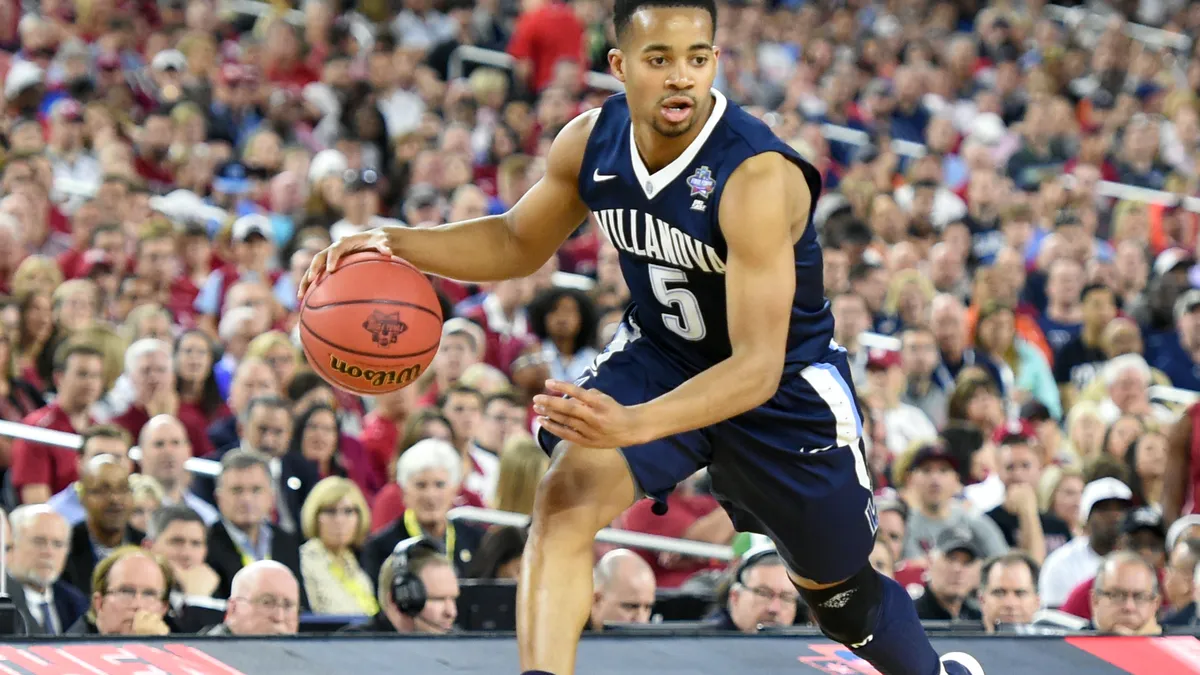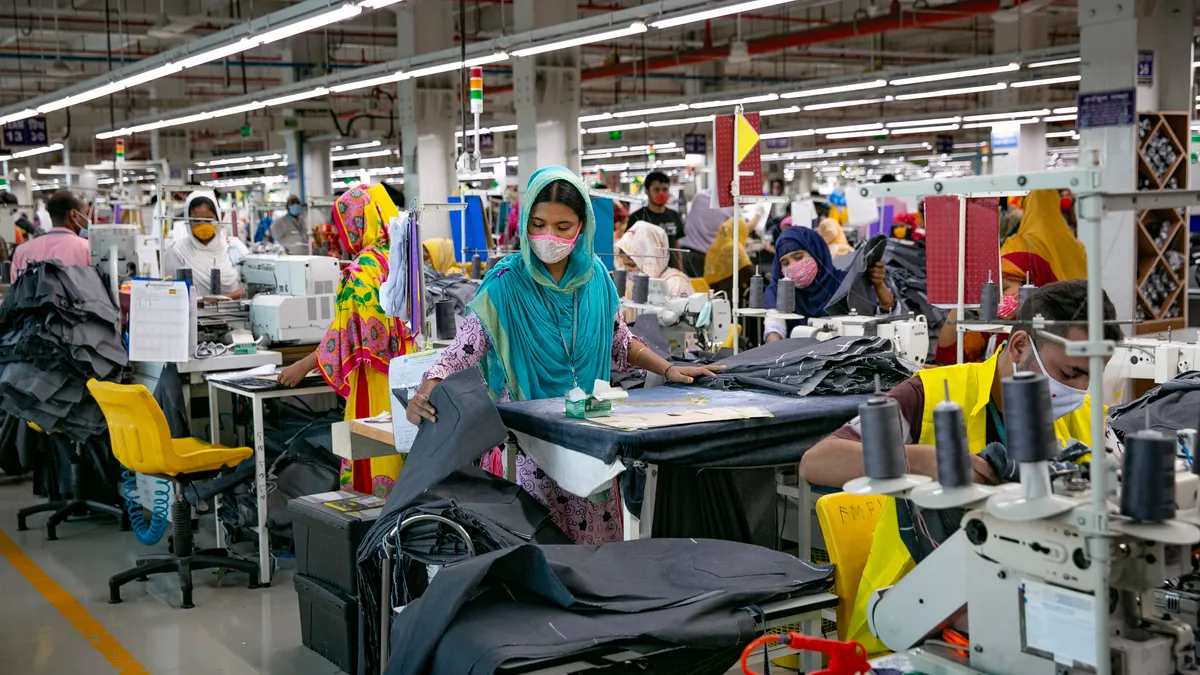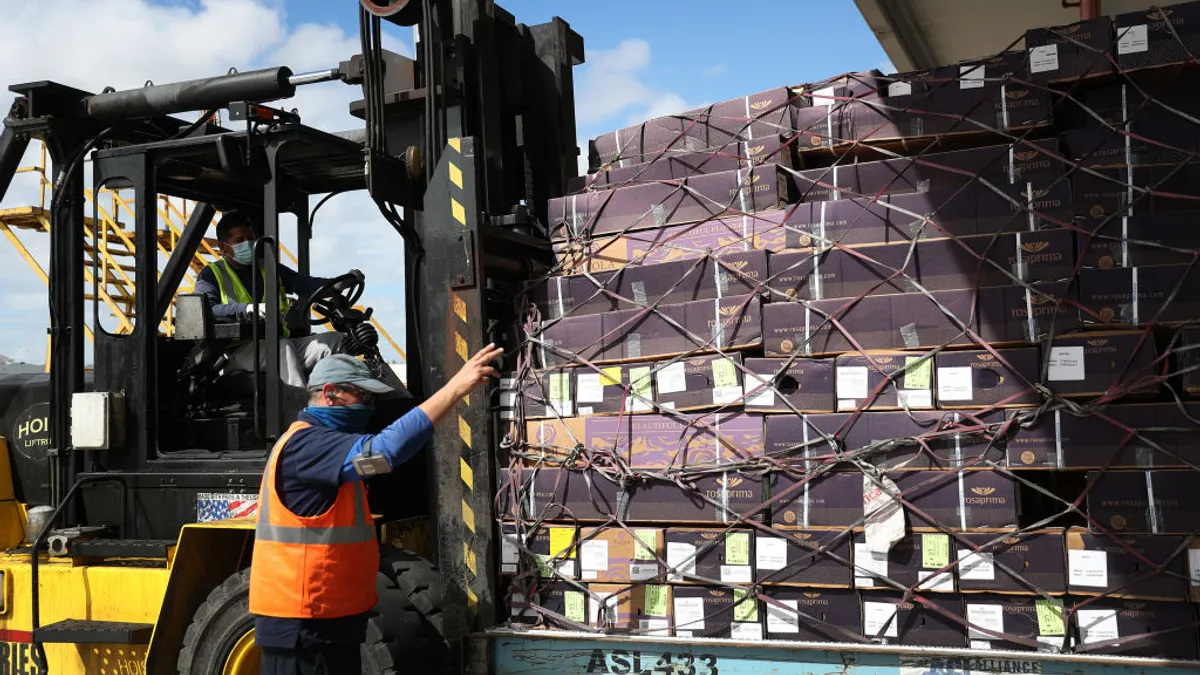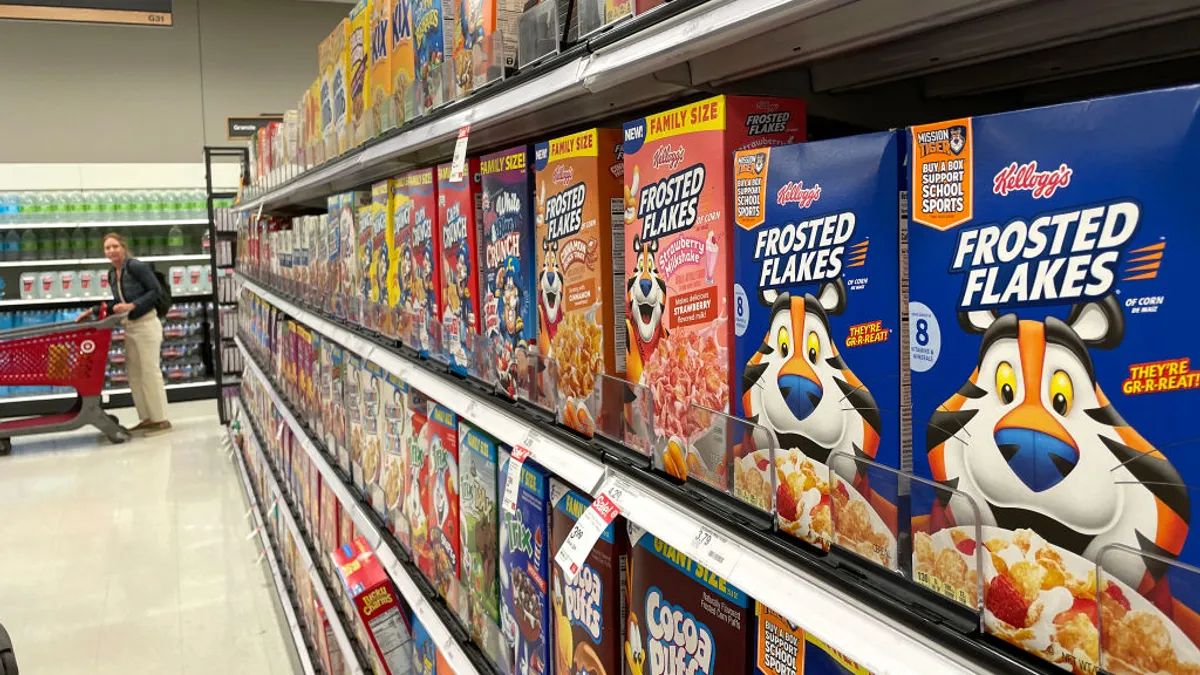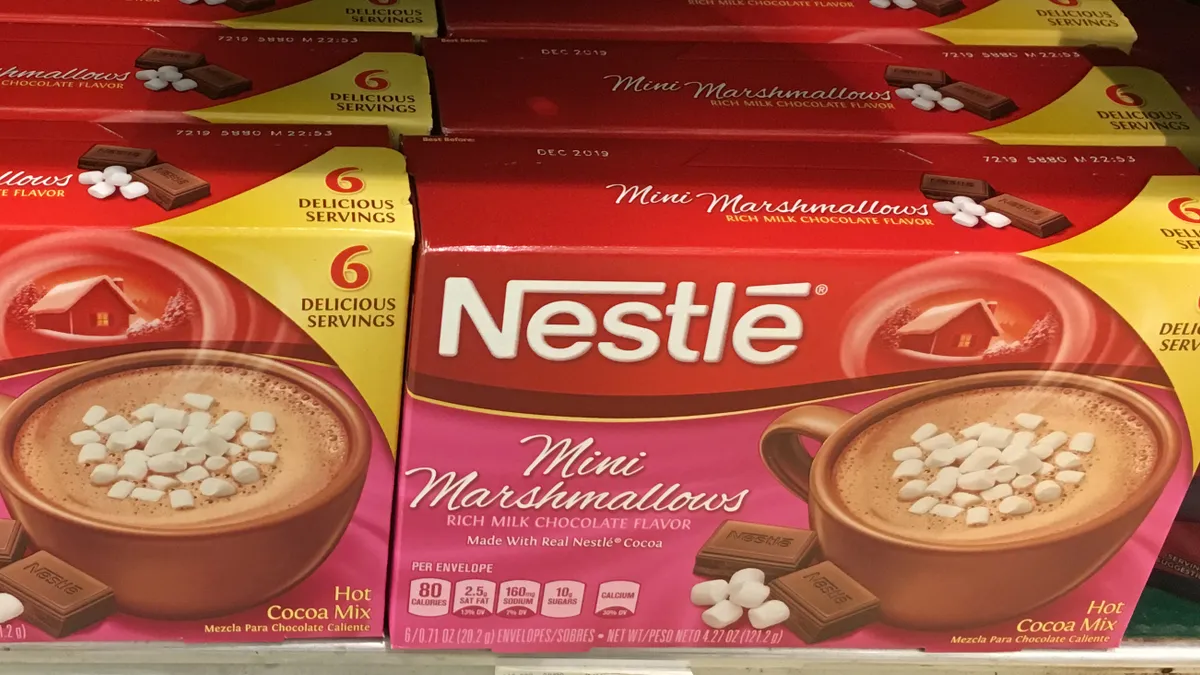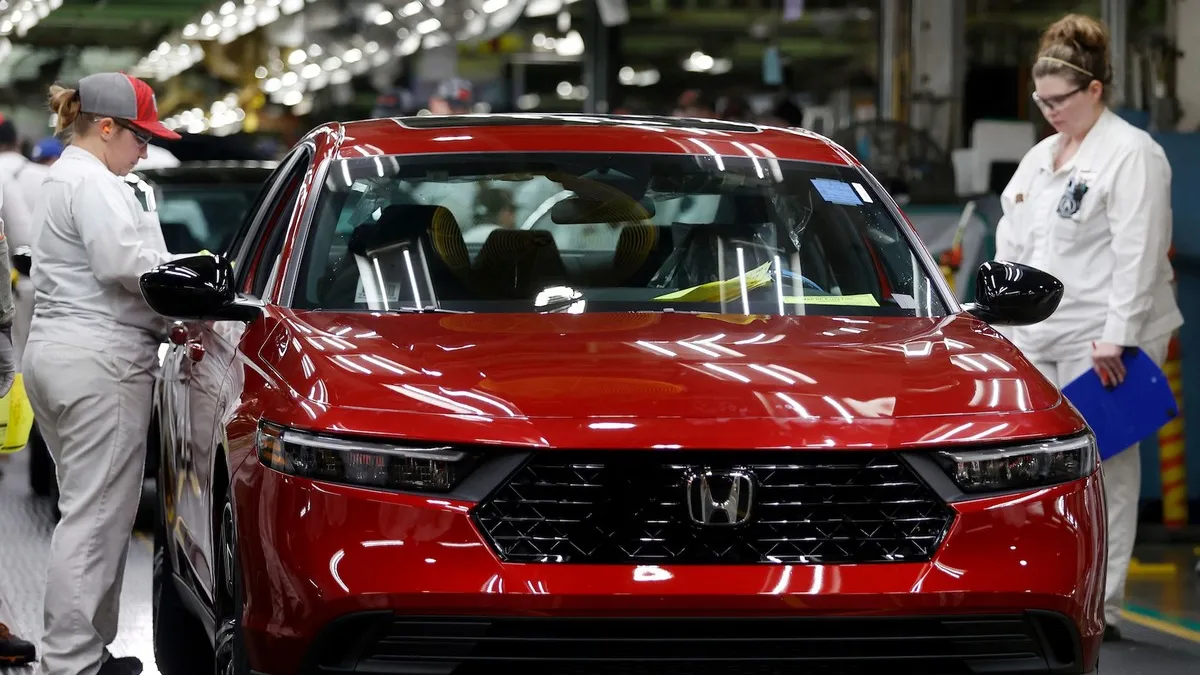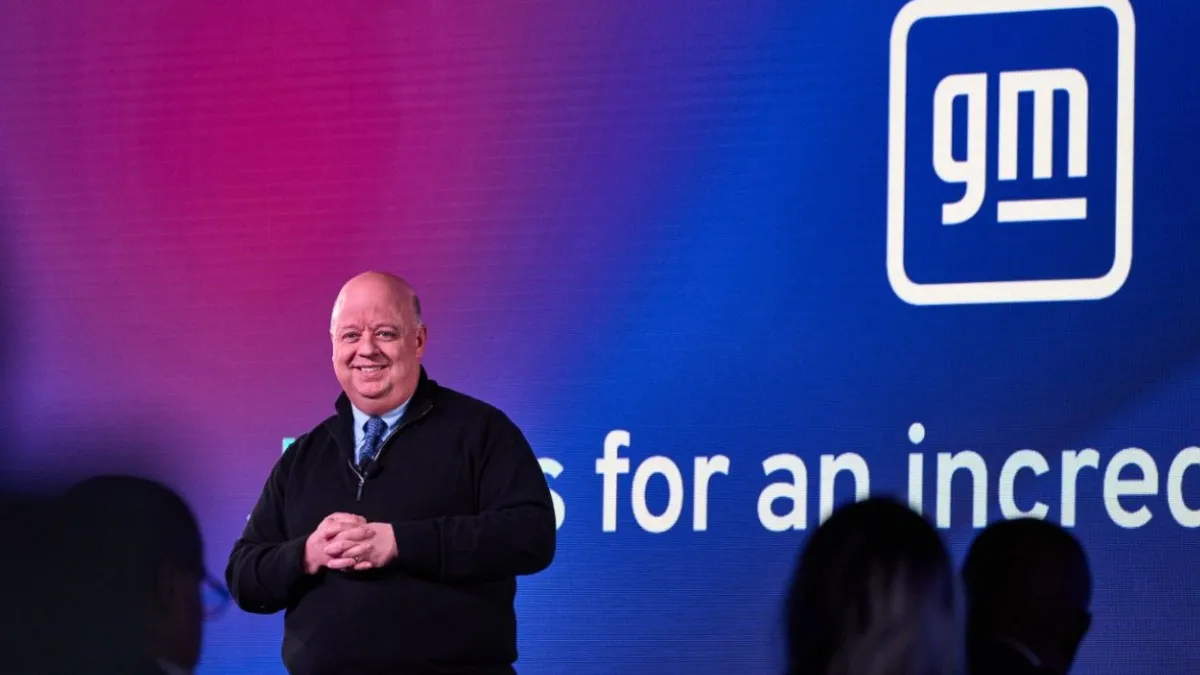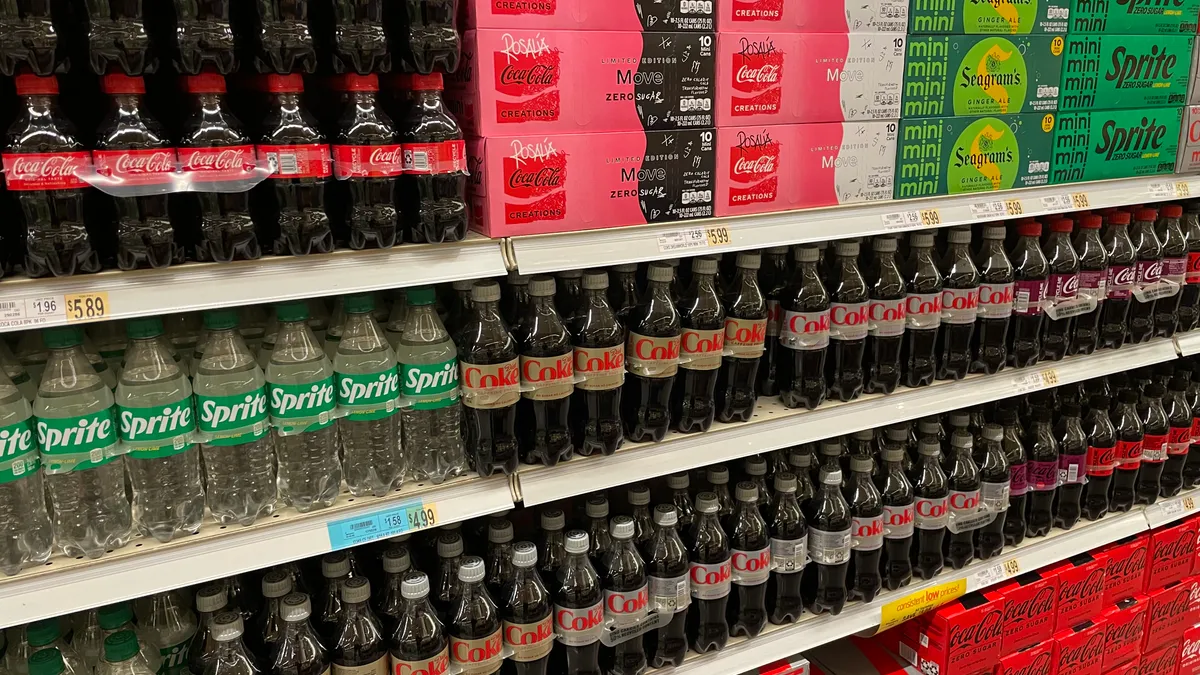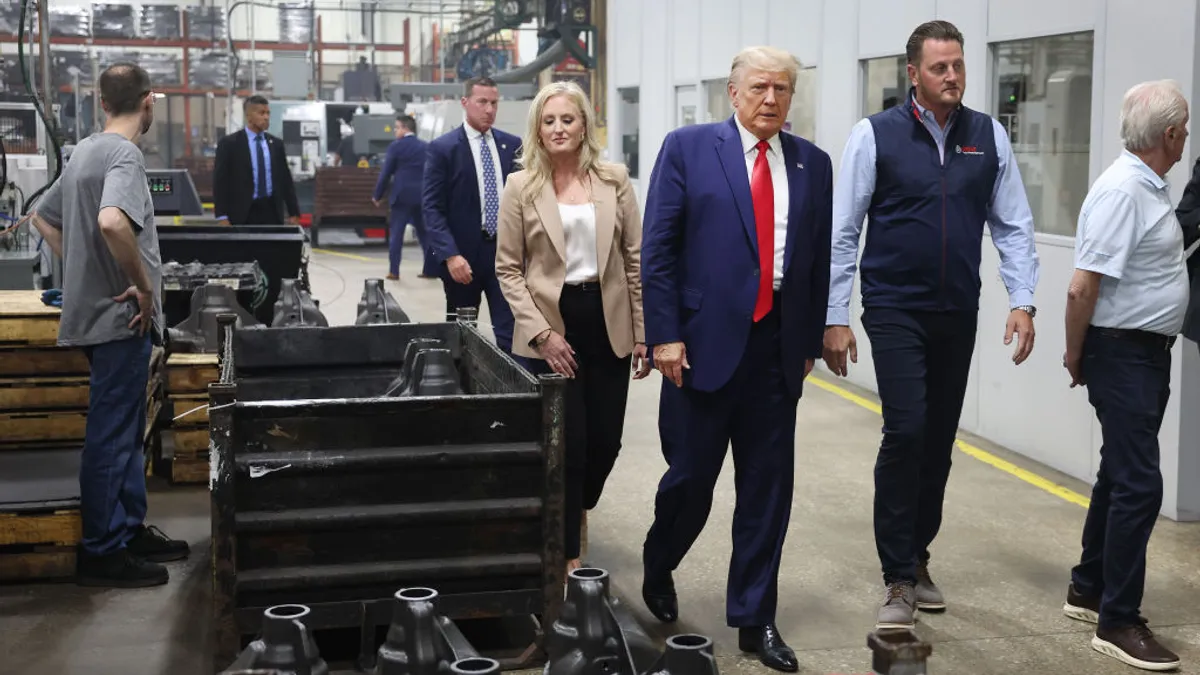March Madness is here, but while most of the focus is on the brackets, players and buzzer beaters, there is another source of drama: the supply chains and labor behind the athletes' outfits and equipment.
There's big money at stake, for apparel companies and universities. Collegiate licensing is a booming business.
- Three of the large apparel companies, Nike, Adidas and Under Armour, paid $250 million in college contracts in 2014.
- In 2015, The University of Texas at Austin signed a 15 year, $250 million deal with Nike.
- In 2016 University of Michigan signed an 11-year Nike contract for $127 million, providing cash plus uniforms, shoes, clothing and equipment for 31 Michigan athletic programs. An optional four-year extension is worth another $47 million.
But caught in between university/apparel deals are the factories and workers producing these goods. Allegations of sweatshop abuses date back to the 1990s, according to Mary Embry, a senior lecturer in apparel merchandising at Indiana University, Bloomington. And the allegations continue today — in December, for example, Georgetown University decided not to renew its contract with Nike unless Nike signed the school's code of conduct.
But university officials and supply chain managers know signing a code of conduct is rarely enough without proper enforcement. Like a buyer-supplier relationship, however, schools can influence company policy to ensure fair labor practices are a priority throughout the supply chain. After all, universities, contracted factories, workers, watchdogs and brands are all key links in the complex chain producing athletes' uniforms.
Whose responsibility is it?
A university's code of conduct spells out what apparel manufacturers for licensed items must do to certify that their factories and suppliers are meeting fair labor standards. But if no one is checking, the codes are useless. Solidarity Research published a 2016 report showing that of the SUNY schools they contacted, the policies were not only weak, but often not enforced.
It is hard to understand the extent of a human rights problem since there's no up-front certification, said Embry. "You don't know there's a problem until someone says there's a problem."
Yet, watchdog groups' auditing models can make it difficult to track abuses. The Worker Rights Consortium, for example, responds to complaints or reported problems, like labor strikes, but just because a university is a WRC member and has a code of conduct does not mean the apparel is ethically made, said Embry.
You don’t know there’s a problem until someone says there’s a problem.

Mary Embry
Senior Lecturer, Apparel Merchandising, Indiana University, Bloomington
Ideally, a corporation agreeing to conduct themselves a certain way should be liable for its actions, said Embry. As part of the apparel business requires subcontracting work to other tiers, the university relies on the brand to police suppliers as well. The universities therefore push moral responsibility upon the brands selling the apparel.
"The primary mission of the university isn't to sell apparel," Embry added. "It's a lot to hope that universities would take that on themselves. It seems outside their mission." She notes, however, that universities don't want to sell apparel made in sweatshops.
Plus, no university has the capacity or capability to monitor the entire supply chain, said University of Michigan professor Ravi Anupindi, PhD, professor of operations research and management and the chair of the UM President's Advisory Committee on Labor Standards and Human Rights. "Because we're a large university, we have, I think, close to 400 licensees. For the contracts management people, it's a humongous job," he said. That's why they work with external organizations, primarily the WRC and Fair Labor Association (FLA).
While apparel companies are big, "we do have leverage," said Anupindi. For the university, it's not just about protecting the school's brand, but using leverage to bring about a positive role in the supply chain. And in the end, brands care about their reputation, he said.
When audits fail: The case against Nike
Nike originally made news when factory workers for Nike contractor Hansae Viet Nam went on strike, alleging human rights and labor abuses. Yet despite the various allegations, Nike resisted efforts of the WRC to independently inspect the factory, only agreeing to allow a joint inspection with the FLA, the brand's preferred auditor, in October 2016.
The incident sparked controversy among some of Nike's collegiate partners, including Georgetown University, whose supplier code of conduct requires apparel vendors to accept auditing from the WRC. When Nike refused, reports revealed the vendor was the only of Georgetown's partners who would not subject itself to external auditing. Meanwhile, reports of labor violations in Vietnam continued.
As a result, Nike is at the receiving end of activist efforts right now. "We are currently waging a campaign against Nike to ensure that Nike respects university codes of conduct in labor standards and supplier factories that source to colleges and universities," United Students Against Sweatshops (USAS) International Campaigns Coordinator Angeles Solis told Supply Chain Dive.
By design, the FLA is not transparent and does not release its findings, said Solis, and is thought to be too lenient when documenting and recommending remediation for the problems. The FLA has several membership categories, including universities, and the brands whose factories the FLA inspects. Meanwhile, the WRC is funded by universities and considered an impartial inspection group, according to Solis.
Nike disagrees, however, claiming the WRC's activist affiliations form a conflict of interest with the auditing work it pledges to do.
"We respect the WRC commitment to workers' rights while recognizing that the WRC was co-created by United Students Against Sweatshops, a campaigning organization that does not represent the multi-stakeholder approach that we believe provides valuable, long-lasting change," a Nike spokesperson told Supply Chain Dive. "The FLA is Nike's accredited auditor and represents universities, academics, NGOs, civil society and companies."
Nike is the only collegiate apparel company that has restricted WRC access to factories, according to Solis. "Nike never reported the abuses in the factories. They have been auditing that factory for more than 10 years," she said.
For that reason, the WRC ran a covert independent inspection last April, interviewing Han Sae Vietnam workers outside the factory. Having visited the Nike supplier factory, she said they found it had the worst fainting allegations the WRC had seen, with 90+ degree temperatures inside the building. In addition, they found pregnant women were systematically fired toward the end of their pregnancies, and workers told her that when Nike comes to the factory, they're told that they'll be fired if they tell the truth about working conditions.
The WRC also noted these violations in a December report, after a joint investigation with the FLA, and Nike has reportedly agreed to help remedy them.
A Nike spokesperson told Supply Chain Dive the company had sanctioned the factory by reducing orders to 3% production capacity, from the 9% ordered before the allegations. "Basically, what we say is that if you cannot be performing at our requirements of basic code of conduct compliance, that we will limit the amount of orders that we send to the factory – to try and put a little bit of weight."
In addition to Georgetown's decision to stop working with Nike until it signs the school's code of conduct, USAS members at University of Texas at Austin met with administrators and Nike in November, but Nike would only talk about strengthening business ties, according to The Daily Texan.
UM is still considering how to respond to Nike, said Dr. Anupindi. The school's approach with the code of conduct is to tell a licensee that UM has a right to an independent investigation, though it does not specify which organization must conduct it. Some universities specifically mention WRC, according to Anupindi.
The UM committee received reports from the investigation. "The good news is that the Hansae factory and Nike are working together," Anupindi said. "We have not yet finalized our recommendations to the president about what, if anything, we should do or ask Nike to do."
What can an apparel brand do?
Yet, Nike does not appear to be budging on the universities' demands, citing the need for a standardized approach to audits if the company seeks to influence its suppliers.
"Nike has not signed any individual university code of conduct," the spokesperson said. "Nike has over 1,000 university partners, many of whom have their own codes of conduct, which are subject to change. Given the volume, speed and dynamism of factory production, it would be an unsustainable disruption to business operations … and impossible to implement these individual school codes and changes."
It can be difficult for brands to know what's actually happening at factories. In addition to using third party inspectors, large brands often conduct their own inspections. But it's not uncommon for workers to be told to keep their mouths closed about violations. Factories might also rely on language barriers and alerts when inspectors come, for some to vacate the factory.
There is only so much that compliance can do on its regular schedule, there's a lot relationships can do.

Nike
Spokesperson
In addition, factories may manufacture goods for multiple brands, each with its own code of conduct and expectations. Individual codes may vary, but labor violations may easily violate the rules for all companies contracting there. Stakeholders can work together to push a supplier to compliance.
Other brands have found various ways to hold the factories accountable. Uniqlo, for example, is combating factory violations by providing supplier codes to the factories in their local languages, as well as promoting better factory grievance systems. As for Nike, the company's sustainability report notes the company is moving to use fewer suppliers by increasing production at only those factories with consistently high ratings during regular audits. Companies with poor ratings, meanwhile, may be subject to sanctions like those imposed on the Hansae factory.
Easier said than done, however. While activism may call for an institution to cut off a supplier due to labor violations, the reality is such violations remain widespread.
For that reason, some companies, like Apple, have previously hesitated to cut off relations with suppliers due to the workers' economic dependence, arguing they can do more for laborers by continuing to work with contractors on improving conditions. Nike concurs.
"There is only so much that compliance can do on its regular schedule, there's a lot relationships can do," a Nike spokesperson said.
Audits are but the first step in correcting labor violations in the supply chain. To drive impact, companies must ensure all stakeholders, including watchdogs, universities and suppliers, are aligned in the common goal of improving labor standards for ethical production.


